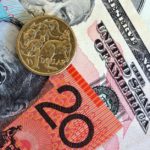Gold swung between gains and losses but remained fairly unchanged and continued to trade close below the $1 400 mark following another batch of negative U.S. data, which further dampened speculations that the Federal Reserve will begin decelerating its monetary stimulus in September.
On the Comex division of the New York Mercantile Exchange, gold futures for delivery in December traded at $1 396.30 per troy ounce at 14:51 GMT, up 0.04% on the day. Prices held in range between days high of $1 406.50 earlier in the day, the strongest level since June 6, while day’s low stood at $1 391.10 per ounce.
Gold swung between gains and losses on Monday as it drew support by speculations that the Federal Reserve will delay tapering its $85 billion bond purchasing program, while the metal struggled to rise above the $1 400 mark, a key resistance zone. The precious metal was supported by Fridays downbeat new homes sales data and Mondays disappointing durable goods orders.
The commerce department reported at 12:30 GMT that U.S. durable goods orders dropped by 7.3% in July, mismatching analysts projections for a decrease by 4.0% after advancing in June. The preceding months reading was revised down to a gain of 3.9% from 4.2%.
Durable Goods Orders ex Transportation, which exclude the more volatile transportation items, marked a 0.6% contraction, underperforming expectations for a 0.5% gain. Junes reading was initially measured as remaining flat but received an upward revision to a 0.1% increase.
Durable Goods Orders ex Defense, which exclude defense expenditures, contracted by 6.7% last month, mismatching an anticipated 2.6% drop from Junes advance of 2.9%, which was revised downward by 0.1% from 3.0%.
Shipments of core capital goods, a category used to calculate quarterly economic growth, declined by 1.5% in July, compared to expectations for a 0.3% increase.
The numbers supported some of the FOMC policy makers’ stance that the U.S. economy requires further monitoring before Quantitative Easing is decelerated. St. Louis Federal Reserve Bank President James Bullard, one of Fed’s monetary stimulus supporters, said last week that the central bank should take time and assess the U.S. economy and inflation thoroughly before tapering the bond purchases. He commented for Reuters: “I don’t think we have to be in any hurry. Inflation is running low and we have got mixed data on the economy. We can afford to be very deliberate in our decision making.”.
Atlanta Fed President Dennis Lockhart, a Quantitative Easing supporter, said he will vote yes for decelerating the bond purchasing program if the economic data is supportive. He commented for Reuters: “I would be supportive in September as long as the data between now and then basically confirm the path we’re on. I am confident in a continuation of this sort of moderate growth path.”
On Friday, the U.S. Commerce Department reported that 0.394 million new homes were sold in the U.S. in July, marking a 13.4% decline. This was the lowest level in nine months and the steepest drop in three years. New Homes Sales completely mismatched projections for a rise to 0.490 million units sold. At the same time, June’s reading received a downward revision to 0.455 million from the previous reading of 0.497 million homes.
The precious metal has rebounded nearly 16% since falling to a 34-month low of $1 180.15 a troy ounce on June 28 but is still en route to cap a 12-year bull run after declining 17% so far this year. The metal slumped amid shifting expectations that the Federal Reserve will decelerate its monetary stimulus and bring it to an end by mid-2014. An exit from the stimulus program would hurt golds demand prospects as it is mainly used as a hedge against inflation, which tends to arise when central banks easy money supply.
The lower prices however supported golds physical demand from its top consumers. According to World Gold Council data, global bar and coin sales rose by 78% to 507.6 tons in the second quarter compared to a year earlier as demand in India and China, the world’s top two consumers, more than doubled. Jewelry demand increased by 47% to 575.5 tons.
Sales of coins and bars will reach as much as 1 000 metric tons in the two countries by the end of the year as low prices and economic recovery spurred demand. China’s demand totaled 776.1 tons last year, while India consumed 864.2 tons, council data showed.
Meanwhile, gold jewelry demand in Indonesia, Southeast Asia’s biggest buyer, may surge to a four-year high. According to Iskandar Husin, secretary-general of the Indonesian Goldsmiths and Jewelers Association, consumption of rings, bracelets and necklaces is expected to climb to 40 tons this year as prices fell after April’s entry into a bear market and as the country’s middle class grows larger. Indonesia’s economy has expanded more than four times in the past 10 years with its GDP surging to $878 billion.
Market players will be keeping a close eye on this week’s U.S. economic data to further gauge Quantitative Easing’s tapering prospects. Tuesday’s Consumer Confidence is projected to have fallen to 79.3 in August from 80.3 in the preceding month. The S&P/Case-Shiller Composite-20 Home Price Index might also post a decline. Wednesday’s Pending Home Sales might have advanced by 0.1%. On Thursday, the Preliminary Revised GDP is likely to have grown by 2.3%, while consumer spending and core consumer spending (Personal Consumption Expenditures) probably surged by 1.8% and 0.8% in the second quarter respectively. Initial Jobless Claims probably fell by 1 000 in the week ending August 24. On Friday, Personal Income and Spending are expected to have advanced in July but at a slower pace than in June. Core PCE on monthly and annual basis likely rose in July and the Chicago PMI and Final University of Michigan Confidence are projected to have advanced in August as well.





